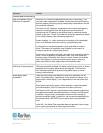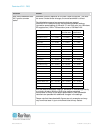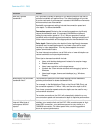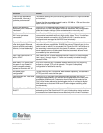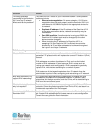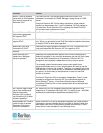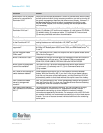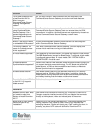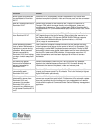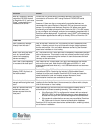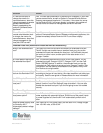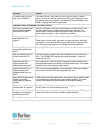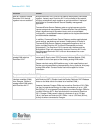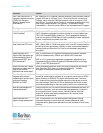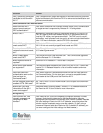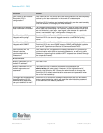
Dominion KX II - FAQ
© 2010 Raritan Inc. Page 18 of 20 V1098 R2 January 2010
Question Answer
Can I use Dominion KX II
computer interface modules
(CIMs) with Paragon,
Raritan’s analog matrix
KVM switch?
No. Dominion KX II computer interface modules (CIMs) transmit video at
ranges of 50 feet to 150 feet (15 m – 46 m) and thus do not work with
Paragon, which requires CIMs that transmit video at a range of 1,000
feet (304 m). To ensure that all Raritan’s customers experience the very
best quality video available in the industry – a consistent Raritan
characteristic – Dominion series CIMs do not interoperate with Paragon.
Security
Is the Dominion KX II FIPS
140-2 Certified?
The Dominion KX II, as of Release 2.2.0, uses an embedded FIPS
140-2 validated cryptographic module running on a Linux platform per
FIPS 140-2 implementation guidelines. This cryptographic module is
used for encryption of KVM session traffic consisting of video, keyboard,
mouse, virtual media and smart card data.
What kind of encryption
does Dominion KX II use?
Dominion KX II uses industry-standard (and extremely secure) 256-bit
AES, 128-bit AES or 128-bit encryption, both in its SSL communications
as well as its own data stream. Literally no data is transmitted between
remote clients and Dominion KX II that is not completely secured by
encryption.
Does Dominion KX II
support AES encryption as
recommended by the U.S.
government’s NIST and
FIPS standards?
Yes. The Dominion KX II utilizes the Advanced Encryption Standard
(AES) for added security. 256-bit and 128-bit AES is available.
AES is a U.S. government-approved cryptographic algorithm that is
recommended by the National Institute of Standards and Technology
(NIST) in the FIPS Standard 197.
Does Dominion KX II allow
encryption of video data? Or
does it only encrypt
keyboard and mouse data?
Unlike competing solutions, which only encrypt keyboard and mouse
data, Dominion KX II does not compromise security – it allows
encryption of keyboard, mouse and video data.
How does Dominion KX II
integrate with external
authentication servers such
as Active Directory,
RADIUS or LDAP?
Through a very simple configuration, Dominion KX II can be set to
forward all authentication requests to an external server such as LDAP,
Active Directory or RADIUS. For each authenticated user, Dominion
KX II receives from the authentication server the user group to which
that user belongs. Dominion KX II then determines the user’s access
permissions depending on the user group to which he or she belongs.
How are usernames and
passwords stored?
Should Dominion KX II’s internal authentication capabilities be used, all
sensitive information, such as usernames and passwords, is stored in
an encrypted format. Literally no one, including Raritan technical
support or product engineering departments, can retrieve those
usernames and passwords.
Does Dominion KX II
support strong passwords?
Yes. The Dominion KX II has administrator-configurable, strong
password checking to ensure that user created passwords meet
corporate and/or government standards and are resistant to brute force
hacking.



